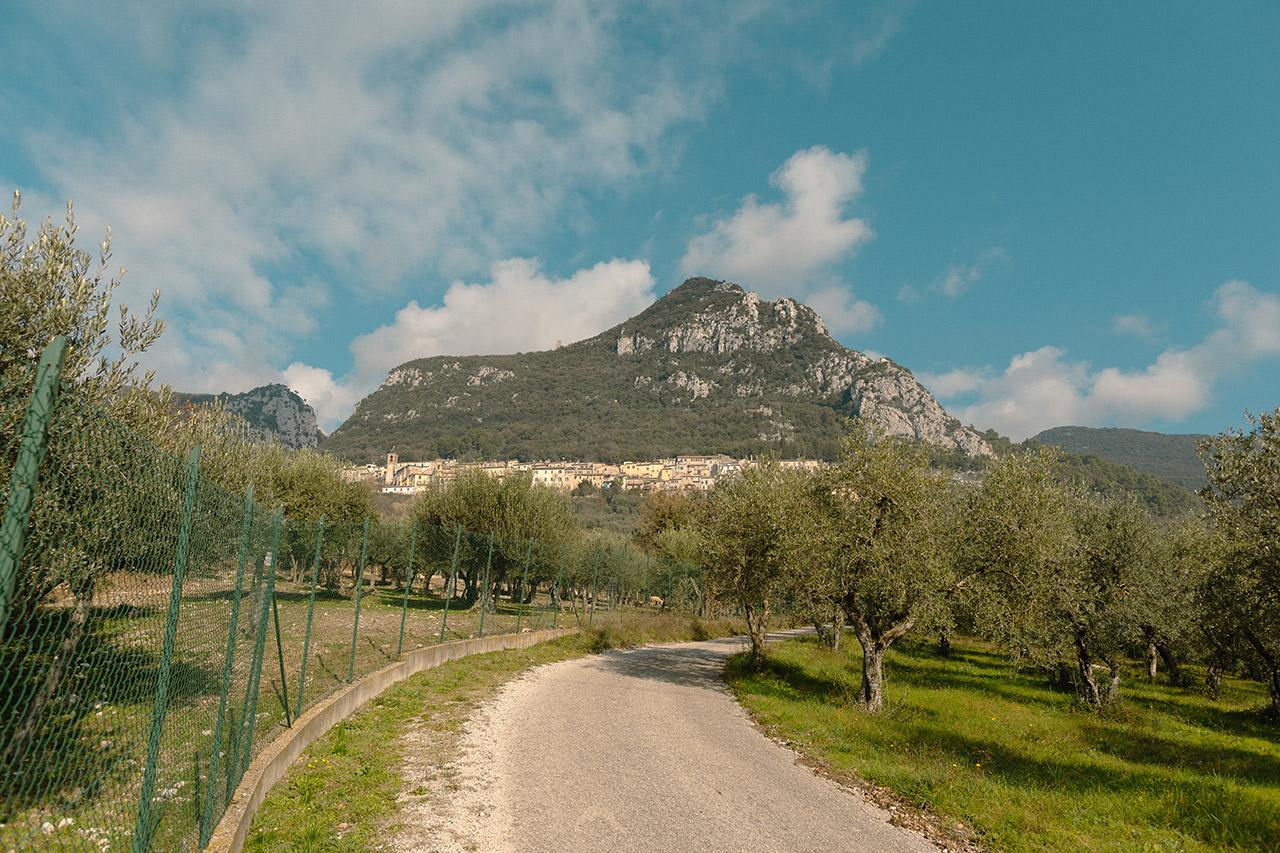The "enchanted mountain" as the "mountain of Cesi" is defined, is called Mount Aeolus.
This appellation is linked to the legend of the god of the winds who was thought to live in the bowels of the mountain, from which jets of air, hot in the winter and cool in the summer, issue forth. For this reason the ancient inhabitants of the area imagined that Aeolus, the god of winds, lived in these places. Today this phenomenon is easily explained: inside the mountain are numerous caves and tunnels which are identifiable by the currents of air coming out of the earth.
The best-known cave is that of Aeolus, which is in the centre of the village under Stocchi palace, and perhaps to which the oldest of the legends of Cesi is linked.
In reality it is more than a myth, shrouded in history and indeed legend: the massacre of the Umbrians in the caves of Cesi. Tito Livio, in Book 10 of his Historiae, speaks about a massacre of two thousand Umbrians, forced by the Romans to find refuge in a cave in which, so the historian claims, the legionnaires found two entrances. So they set fire to the openings of the same causing the warriors to die, suffocated by the smoke and fire. It is thought that the caves were those of Cesi. However, so far investigations carried out by speleologists have been fruitless. It is opportune to remember though that there are numerous caves in the mountain and that, in over two thousand years, there have been collapses and transformations of the same that prevent them from being explored entirely.
Another very old story is about the mazzamorello, a goblin who terrorises the inhabitants and travellers with various mischief. In the area it is believed to be active above all at nighttimes, and is responsible for asthma attacks of the unfortunate people and the escape of animals from their enclosures.
The “Mazzamorello Road” runs alongside the Central Umbrian Railway, and was already mentioned in the land registry of Terni as the border between Terni and Narni in 1568.
From the “Vocabulary of Terni dialect” by Flavio Frontini (Terni, 2002) we discover that lu mazzamurellu is a “spirit, goblin – a nocturnal nightmare type of spirit that disturbs sleepers by sitting on their stomach. It is said that during the earthquake of 1917, following the collapse of rock pieces from the ridge of St.Erasmo, many of these creatures were freed into the air”
The mazzamorello is actually present in the folklore of several regions in central-southern Italy. To remain in the area, we can also meet them in some ravines of the Marmore Falls, where they are referred to as gnefro.
However, there are many popular legends; according to some, including an enthusiast of the ancient history of Terni, Engineer Costanzi who wrote about this in the 30s, believed that a large town existed under the Martani mountains called Kryptona.
Before the arrival of the Romans it was built by the Umbrians, who appear to have had their fortress at St.Erasmo. They found and used the underground tunnels which were dug centuries earlier by another mythological people, the Pelasgians, of whom there is no trace.
Therefore, according to legend, under the mountain of Cesi, a true and proper underground kingdom developed, with large, comfortable roads. It was said that the Queen of the Umbrians used them to travel on horse-drawn carts, roads that crossed the whole of the Aeolus mountain as far as Carsulae. In the numerous caves that opened up in the area, in the past priests used to throw offerings (food, votive objects) to propitiate the divinities of the underground. But there are also those who say that the people on the surface used them to communicate with the people of legendary Kryptona.
According to another tradition, it is said that on the occasion of the summer solstice, the temple priests performed purification rites. In fact, on that day the Ursa Major is perpendicular to the top of Torre Maggiore mountain. Therefore the temples would have been a sort of great altar (ara major) raised to the Sun. The terms “ara major” and “terra majura” are also perpetuated in the chronicles of the 19th century, perhaps as a distant memory of the ancient religious cults (probably dedicated to Castor and Pollux), which attracted people from all over Umbria. Therefore the mountain would have been a kind of “cosmic mountain” of Celtic memory.


